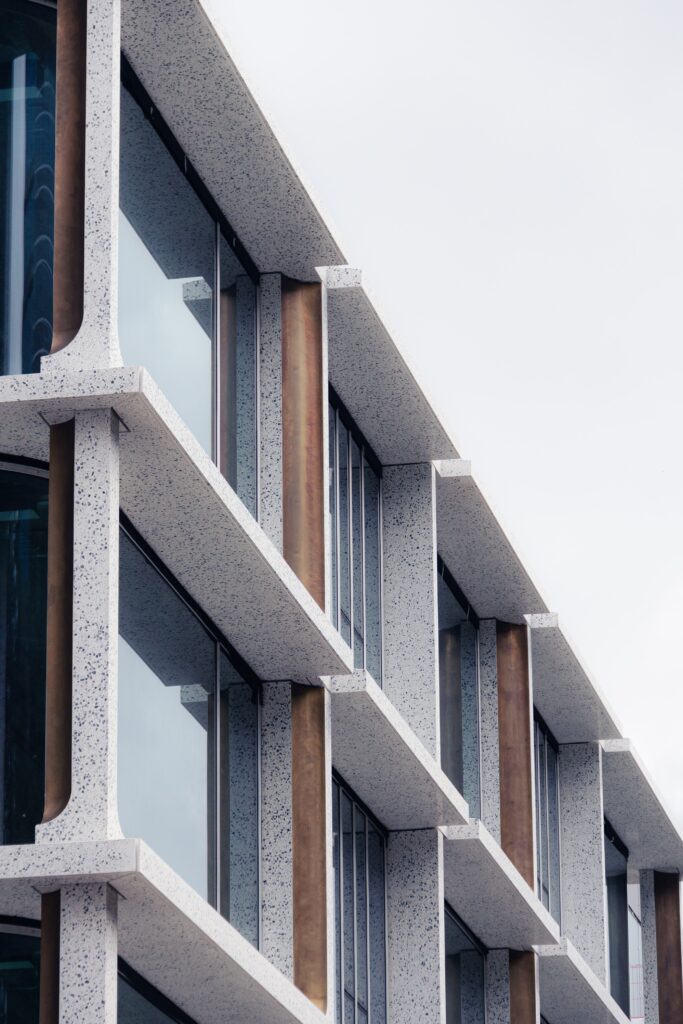The innovative trends in modern construction has been a cornerstone of civilization for thousands of years. Yet, the sector is not impervious to change. As we continue to innovate, we are witnessing a transformation in how we design, plan, and build structures. This article will delve into the innovative trends in modern construction that are reshaping the industry.
Innovative trends in construction are primarily driven by the need to improve efficiency, sustainability, and safety. They are a response to various challenges, such as urbanization, population growth, and climate change. These trends are not only changing the way we build but also the way we think about construction.
Innovation in construction spans a wide array of areas. From the use of new materials and construction techniques to the integration of technology, the industry is evolving at a rapid pace. These trends are paving the way for a future that is smarter, greener, and more efficient. Let’s delve into the role of technology in these developments.
The Role of Technology in Modern Construction
Technology is playing an increasingly pivotal role in modern construction. Tools and platforms that facilitate design, planning, and execution are transforming the industry. From Building Information Modelling (BIM) to drones and augmented reality, technology is changing the way we build.
BIM, for instance, is a digital representation of a building that can be used for design, construction, and maintenance. It allows architects, engineers, and contractors to collaborate effectively, reducing errors and improving efficiency. Drones are also becoming common in construction, used for site surveys, inspections, and progress monitoring. They provide a bird’s eye view of the construction site, increasing accuracy and safety.
“Innovation in architecture isn’t just about constructing new buildings. It’s about designing spaces that speak to the heart, challenge the mind, and stand the test of time.”
Augmented reality (AR) and virtual reality (VR) are other technological advancements making headway in construction. These technologies allow stakeholders to visualize the finished product before construction begins, enabling better planning and decision-making. Now, let’s look at how sustainability is becoming a key factor in modern construction.
Sustainable Construction: Building for the Future
Sustainability is no longer a buzzword in the construction industry; it’s a necessity. With the growing awareness of environmental issues and the urgent need to reduce carbon emissions, the industry is making strides towards sustainable construction.
Sustainable construction involves the use of green materials, energy-efficient building practices, and designs that minimize environmental impact. It also emphasizes the longevity and adaptability of buildings, promoting a life-cycle approach to construction.
Green buildings, for instance, are designed to be energy-efficient, reducing the consumption of resources during their operation. They are also built with materials that have low environmental impact, such as recycled or renewable materials. Moreover, sustainable construction seeks to minimize waste during the building process, promoting recycling and reuse of materials. Let’s move on to the impact of 3D printing on the industry.
The Impact of 3D Printing in the Construction Industry
One of the most exciting innovations in construction is 3D printing. This technology has the potential to revolutionize the industry, offering numerous benefits such as cost savings, speed, and customization.
3D printing in construction involves the use of a large-scale printer to create building components or even entire structures. This technology can significantly reduce construction time, as components can be printed on demand and on-site. It also allows for a high degree of customization, as designs can be easily modified in the digital model.
3D printing also has the potential to reduce waste, as it uses precisely the amount of material needed for each component. Moreover, it can work with a variety of materials, including concrete, metal, and even recycled materials. This opens up possibilities for sustainable construction. Next, let’s explore the rise of modular and prefabricated construction.

The Rise of Modular and Prefabricated Construction
Modular and prefabricated construction is another trend gaining momentum in the industry. This approach involves the production of building components in a factory, which are then assembled on-site. This method offers numerous benefits, such as time and cost savings, improved quality control, and reduced waste.
Modular construction, in particular, allows for a high degree of customization. Modules can be designed to meet specific needs, and they can be easily modified or expanded in the future. Prefabricated construction, on the other hand, is ideal for standardized structures, offering efficiency and speed.
This construction method also contributes to sustainability, as it allows for precise production and reduces waste. Moreover, factory production often results in better quality, as conditions can be controlled more effectively than on a construction site. Now, let’s discuss smart construction and the integration of the Internet of Things (IoT) in the industry.
From Traditional to Modern: The Unavoidable Shift to Digital Business Transformation
Smart Construction: The Integration of IoT in Construction
The integration of the Internet of Things (IoT) in construction is leading to the rise of smart construction. IoT involves the use of sensors and devices connected to the internet, providing real-time data and insights.
Reasons Why the City of Vancouver BC Outranks Every Other City in the World
In construction, IoT can be used for various purposes, such as monitoring site conditions, tracking equipment, and managing resources. For instance, sensors can monitor temperature, humidity, and air quality on a construction site, providing valuable data for decision-making.
IoT can also improve safety in construction. Sensors can monitor workers’ health and safety, detecting falls or other incidents. They can also track equipment and materials, preventing theft and ensuring efficient use of resources. Now, let’s delve into green buildings and their role in the future of construction.
Green Buildings: The Future of Construction
Green buildings are not just a trend; they are the future of construction. As we grapple with the impacts of climate change, the need for sustainable, energy-efficient buildings has never been greater.

Green buildings are designed to minimize environmental impact and maximize energy efficiency. They use renewable energy sources, such as solar or wind power, and they incorporate features such as green roofs, rainwater harvesting, and natural ventilation.
Beyond their environmental benefits, green buildings also offer economic and social advantages. They reduce energy costs, improve indoor air quality, and can enhance the well-being of their occupants. Next, let’s look at the role of artificial intelligence (AI) and robotics in modern construction.
The Role of AI and Robotics in Modern Construction
Artificial intelligence (AI) and robotics are reshaping the construction industry. From autonomous construction equipment to AI-powered design tools, these technologies are improving efficiency, safety, and productivity in construction.
The Timeless Narrative of Rome: A Deep Dive into the Undeniable Facts about Ancient Rome
AI can analyze vast amounts of data, providing insights that can improve decision-making and planning. It can also automate tasks, such as scheduling and project management, freeing up time for more complex tasks.
Robots, on the other hand, can perform tasks that are dangerous or repetitive, improving safety and efficiency. For instance, robots can be used for bricklaying, concrete pouring, and even demolition. They can work in harsh or hazardous conditions, reducing the risk to human workers. Now, let’s delve into the future of construction, looking at predictions and trends.
The Future of Construction: Predictions and Trends
The future of construction is bright, filled with innovation and technological advancements. Here are some predictions and trends that we can expect to see in the coming years.
Firstly, we can expect to see an increased focus on sustainability. As climate change continues to be a pressing issue, the construction industry will need to continue to innovate and find ways to reduce its environmental impact.
Secondly, technology will continue to play a crucial role in construction. We can expect to see more widespread use of technologies such as BIM, drones, VR/AR, and AI. These technologies will continue to improve efficiency, safety, and collaboration in the industry.
Navigating the Crypto World: A Comprehensive Comparison of Proof of Stake vs Proof of Work
Lastly, we can expect to see more innovative construction methods, such as 3D printing and modular construction, become more mainstream. These methods offer numerous benefits and will continue to transform the way we build.
Conclusion: The Future is Now in Construction
In conclusion, the future is now in construction. The industry is undergoing a transformation driven by innovative trends such as technology, sustainability, and new construction methods. These trends are reshaping the industry, making it smarter, greener, and more efficient.
The construction industry has always been a cornerstone of civilization, and it will continue to be so. However, it must adapt and evolve to meet the challenges of the future. The innovative trends discussed in this article are paving the way for this evolution, building a future that is sustainable, efficient, and digital.
The future of construction is not just about building structures; it’s about building a better world. Let’s embrace these innovative trends and build the future together.





